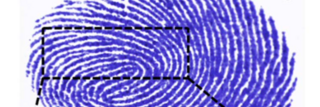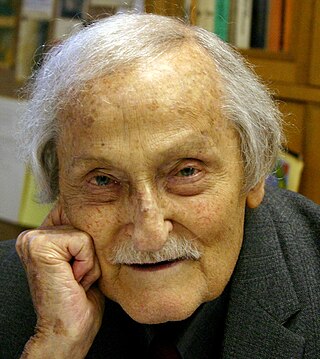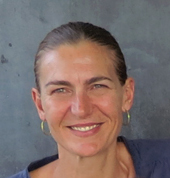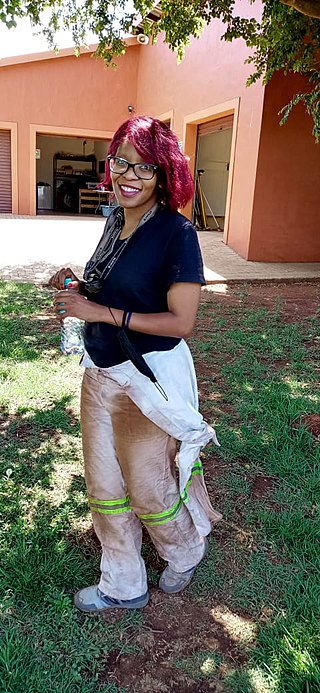
Forensic anthropology is the application of the anatomical science of anthropology and its various subfields, including forensic archaeology and forensic taphonomy, in a legal setting. A forensic anthropologist can assist in the identification of deceased individuals whose remains are decomposed, burned, mutilated or otherwise unrecognizable, as might happen in a plane crash. Forensic anthropologists are also instrumental in the investigation and documentation of genocide and mass graves. Along with forensic pathologists, forensic dentists, and homicide investigators, forensic anthropologists commonly testify in court as expert witnesses. Using physical markers present on a skeleton, a forensic anthropologist can potentially determine a person's age, sex, stature, and race. In addition to identifying physical characteristics of the individual, forensic anthropologists can use skeletal abnormalities to potentially determine cause of death, past trauma such as broken bones or medical procedures, as well as diseases such as bone cancer.
Paleoanthropology or paleo-anthropology is a branch of paleontology and anthropology which seeks to understand the early development of anatomically modern humans, a process known as hominization, through the reconstruction of evolutionary kinship lines within the family Hominidae, working from biological evidence and cultural evidence.

The Cradle of Humankind is a paleoanthropological site that is located about 50 km (31 mi) northwest of Johannesburg, South Africa, in the Gauteng province. Declared a World Heritage Site by UNESCO in 1999, the site is home to the largest known concentration of human ancestral remains anywhere in the world. The site currently occupies 47,000 hectares (180 sq mi) and contains a complex system of limestone caves. The registered name of the site in the list of World Heritage Sites is Fossil Hominid Sites of South Africa.

Sterkfontein is a set of limestone caves of special interest in paleoanthropology located in Gauteng province, about 40 kilometres (25 mi) northwest of Johannesburg, South Africa in the Muldersdrift area close to the town of Krugersdorp. The archaeological sites of Swartkrans and Kromdraai are in the same area. Sterkfontein is a South African National Heritage Site and was also declared a World Heritage Site in 2000. The area in which it is situated is known as the Cradle of Humankind. The Sterkfontein Caves are also home to numerous wild African species including Belonogaster petiolata, a wasp species of which there is a large nesting presence.

Homo floresiensis(), also known as "Flores Man" or "Hobbit", is an extinct species of small archaic humans that inhabited the island of Flores, Indonesia, until the arrival of modern humans about 50,000 years ago.
Marc R. Meyer is an archaeologist and anthropologist who is notable for his excavation of, and research into, the remains of fossil hominids such as Australopithecines and early genus Homo. He currently lectures at Chaffey College, Rancho Cucamonga, CA.

Robert Andrew Foley, FBA is a British anthropologist, archaeologist, and academic, specialising in human evolution. From 1977 to 1985, he was a lecturer in anthropology at the University of Durham. He has been a fellow of King's College, Cambridge, since 1987, and Leverhulme Professor of Human Evolution at the University of Cambridge since 2003.

Phillip Vallentine Tobias was a South African palaeoanthropologist and Professor Emeritus at the University of the Witwatersrand in Johannesburg. He was best known for his work at South Africa's hominid fossil sites. He was also an activist for the eradication of apartheid and gave numerous anti-apartheid speeches at protest rallies and also to academic audiences.

Ronald John Clarke is a paleoanthropologist most notable for the discovery of "Little Foot", an extraordinarily complete skeleton of Australopithecus, in the Sterkfontein Caves. A more technical description of various aspects of his description of the Australopithecus skeleton was published in the Journal of Quaternary Science.

Lee Rogers Berger is an American-born South African paleoanthropologist and National Geographic Explorer-in-Residence. He is best known for his discovery of the Australopithecus sediba type site, Malapa; his leadership of Rising Star Expedition in the excavation of Homo naledi at Rising Star Cave; and the Taung Bird of Prey Hypothesis.
The Rising Star cave system is located in the Malmani dolomites, in Bloubank River valley, about 800 meters southwest of Swartkrans, part of the Cradle of Humankind World Heritage Site in South Africa. Recreational caving has occurred there since the 1960s. In 2015, fossils found there two years prior were determined to be a previously unknown extinct species of hominin named Homo naledi.

Homo naledi is an extinct species of archaic human discovered in 2013 in the Rising Star Cave system, Gauteng province, South Africa, dating to the Middle Pleistocene 335,000–236,000 years ago. The initial discovery comprises 1,550 specimens of bone, representing 737 different skeletal elements, and at least 15 different individuals. Despite this exceptionally high number of specimens, their classification with other Homo species remains unclear.

Dawn of Humanity is a 2015 American documentary film that was released online on September 10, 2015, and aired nationwide in the United States on September 16, 2015. The PBS NOVA National Geographic film, in one episode of two hours, was directed and produced by Graham Townsley. The film describes the 2013 discovery, and later excavation, of the fossil remains of Homo naledi, an extinct species of hominin assigned to the genus Homo, found within the Dinaledi Chamber of the Rising Star Cave system, located in the Cradle of Humankind, South Africa. Additionally, the National Geographic Society has multiple videos on its website covering different phases of the discovery and excavation of the fossils during a two-year period. As of September 2015, fossils of at least fifteen individuals, amounting to 1550 specimens, have been excavated from the cave.

The Underground Astronauts is the name given to a group of six scientists, Hannah Morris, Marina Elliott, Becca Peixotto, Alia Gurtov, K. Lindsay Hunter, and Elen Feuerriegel, who excavated the bones of Homo naledi from the Dinaledi Chamber of the Rising Star cave system in Gauteng, South Africa. The six women were selected by the expedition leader, Lee Rogers Berger, who posted a message on Facebook asking for scientists with experience in paleontological excavations and caving, and were slender enough for cramped spaces. Within ten days of the post, Berger had received almost sixty applicants and chose six scientists to make up his expedition team.
Alia Gurtov is an American paleoanthropologist who is known for being one of the six Underground Astronauts of the Rising Star Expedition.
Qafzeh Cave, also known by other names, is a prehistoric archaeological site located at the bottom of Mount Precipice in the Jezreel Valley of Lower Galilee south of Nazareth. Important remains of prehistoric people were discovered on the site - some of the oldest examples in the world, outside of Africa, of virtually anatomically modern human beings. These were discovered on the ledge just outside the cave, where 18 layers from the Middle Paleolithic era were identified. The interior of the cave contains layers ranging from the Neolithic era to the Bronze Age.

Rebecca (Becca) Peixotto is an American archaeologist who is best known for her contribution to the Rising Star Expedition as one of the six Underground Astronauts, a group of scientists tasked with excavating the Rising Star Cave System. She has also participated in the Great Dismal Swamp Landscape Study and is an experienced wilderness educator.
Hannah Morris is an American anthropologist, known for her contribution to the Rising Star Expedition as one of the six women Underground Astronauts. She is currently a Ph.D. student in the Warnell School of Forestry and Natural Resources at the University of Georgia, studying "the implications of human actions on vegetative ecosystems".

Lucinda Backwell is an archaeologist and a member of the Academy of Science of South Africa. She obtained her MSc in palaeoanthropology from the University of the Witwatersrand Medical School in 2000. Her PhD in palaeoanthropology was awarded in 2004, making her the first South African woman to be awarded a PhD in palaeoanthropology at a local institution.

Keneiloe Molopyane is a South African biological archaeologist and paleoanthropologist. As of 2023 she was lead excavator at Rising Star Cave and is a researcher at Centre for Exploration of the Deep Human Journey at the University of the Witwatersrand. She was named an "emerging explorer" by the National Geographic Society and an invited member of 50 Club Explorers.














